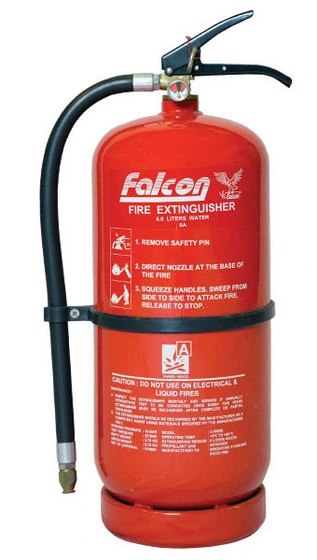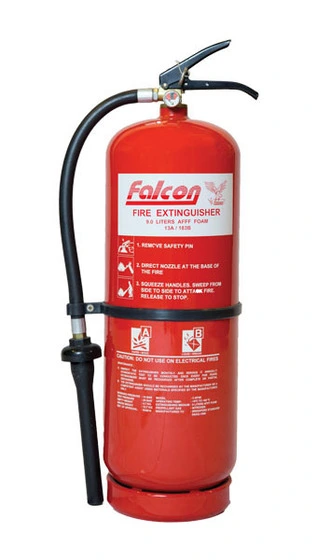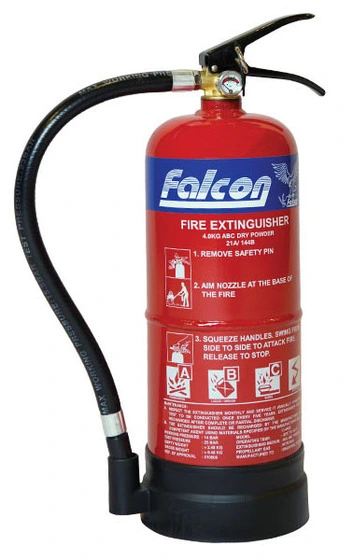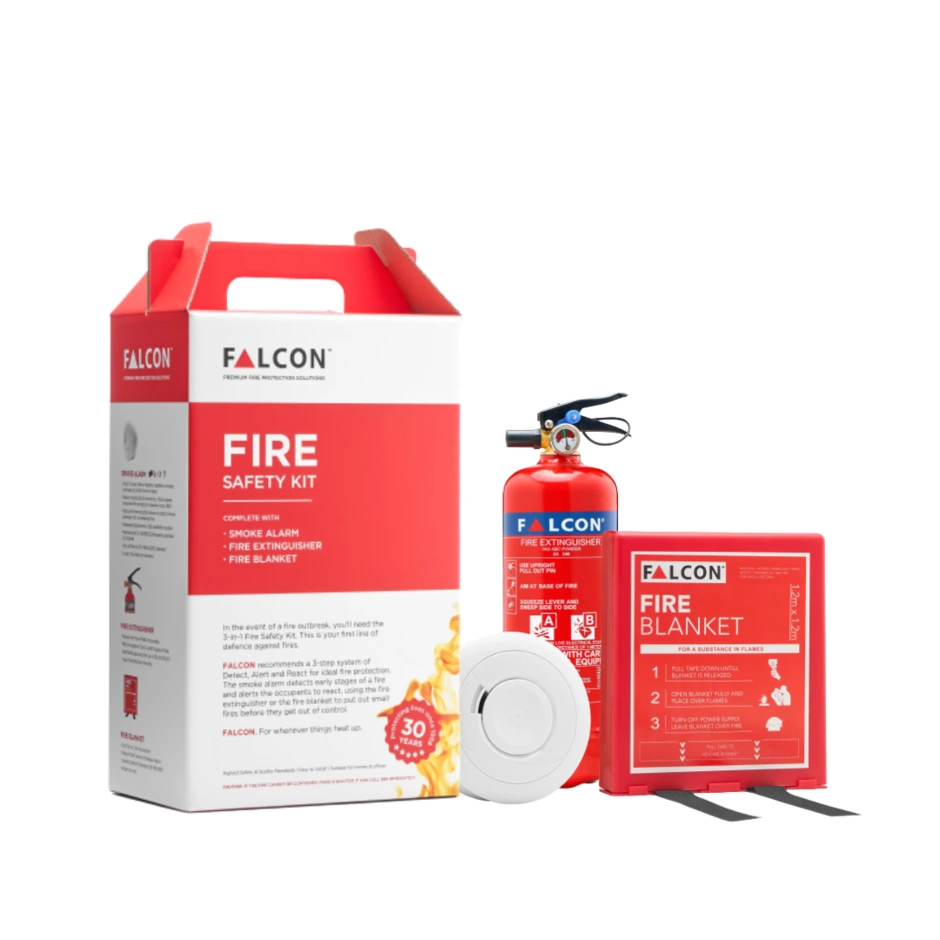Fire safety is perhaps one of the most important concepts in protecting people and their assets. It entails the right interpretation of fire extinguishers as well as their accessories. This article is set to discuss applications of the major four types of fire extinguishers and educate a reader on fire protection. This article is meant for homeowners, business owners, or even one who needs to find fire equipment suppliers in Singapore. It intends to give helpful information on preventing possible fire dangers.
The ABCs of Fire Extinguishers
Fire extinguishers come in different classification with regards to the type of fire they are meant to suppress. These four are mainly in Class A, Class B, Class C, and Class D. Let’s discuss this.
1. Type A (Water) Fire Extinguishers:

- They are red in color and are used for ordinary combustible fires.
- The common materials involved in Type A fires include wood, paper, and textiles.
- They are often found in houses and offices as they can effectively extinguish the common material in the household.
- These extinguishers are easy to use since they are very easy to operate especially for people located in different areas.
2. Type B (Foam) Fire Extinguishers:

- White color-coded foam extinguishers are designed to be used for flammable liquid fires.
- Only to be used with materials with petrol, oil, and solvents.
- The foam covers over the fire which then starves the fire out as it won’t allow the oxygen through
- Absolutely ideal for garages, workshops, and any other form of industrial work where flammable liquids are being used.
3. Type C (Powder) Fire Extinguishers:

- These fire extinguishers possess the blue color code of identification. The purpose is related to electrical extinguishment.
- Such breaking of a chemical chain with an electrical fire would make it suitable for places like offices or workshops or an industrial setup as well.
- The powder extinguishers are effective against fires of various electrical appliances.
- A valuable tool in planning fire safety in rooms that have many electrical components.
4. Type D (CO2) Fire Extinguishers:
- Identified by a black color code, CO2 extinguishers are used specifically against fires that have been caused by flammable metals.
- The fire risks of metals like magnesium and lithium are effectively suppressed by the deployment of CO2 extinguishers.
- Carbon dioxide gas released displaces oxygen, and thus, is smothering the fire and not letting it reignite.
- It is crucial in places where flammable metals are used, for example,laboratories or manufacturing facilities.
Fire Extinguisher Inspection Guidelines:
- Regular inspections are crucial.
- Check pressure gauges, seals, and accessibility.
- Ensure compliance with safety standards.
- Strategically place extinguishers in high-risk areas.
- Kitchens, workshops and electrical rooms
- Read and understand the labels on fire extinguishers
- Labels provide vital information relating to the suitability of the extinguisher to be used in certain fire classes
- Produce final fire protection plans
- Integrate extinguisher usage with evacuation methods
Training on the Proper Use of Fire Extinguishers
Along with the availability of proper extinguishers, training on the proper use of extinguishers is equally important. Fire safety training regularly empowers people with knowledge about what types of fires each extinguisher is for and how to use each. This is a customized fire protection solution.
Reputable fire equipment suppliers in Singapore provide customized solutions according to the specific needs of your premises. This can be the combination of fire extinguishers, fire alarms, and sprinkler systems.
How to Choose a Reliable Fire Equipment Supplier in Singapore:
Certification Assurance:
- When one is choosing a supplier for fire equipment, make sure that the one chosen has relevant certifications.
- Certifications, which may include ISO standards or industry-specific accreditations, denote a commitment to quality and benchmark adhering to recognized standards.
- Certification entails ensuring a supplier’s commodities and services achieve or surpass determined safety and performance standards.
Meets Strict Standards on Safety Measures:
- Ensure that a selected supplier adheres to tight safety standards specified by local bodies and regulatory authorities.
- Compliance would ensure that the fire protection equipment is delivering what is desired in terms of effectiveness and dependability.
- Ensure the supplier is aware of the particular safety requirements that are applicable in Singapore to deliver a customized compliant solution.
Responsive and Prompt Maintenance Services:
- A good supplier should maintain equipment in time. Proper maintenance of fire protection equipment helps the equipment last long and operate in a correct way.
- Ensure to choose a responsive supplier to inspect, refill, and repair in time.
Emergency Support and Response:
- Emergency support and response are essential during an emergency. Consider the mechanisms the supplier has for emergency response and off-hours.
- A good supplier always maintains procedures to correct urgent maintenance needs or replacement when something is needed.
Reputation and Customer Reviews:
- Check the reputation of your supplier in the industry and among its customers.
- Reviews and testimonials that come from online based are the most effective source used in learning more about others or other businesses experience when looking forward to their service.
A good reputation with happy customers assure that the supplier is reliable and concerned about the satisfaction of the customer
Comprehensive Product Range:
- Select a supplier that offers a broad range of fire protection products.
- The extensive portfolio ensures that all the necessary equipment is available from one single, reliable source.
This will ease the process of procurement, while ensuring the consistency of the quality of products used for different components of fire safety.
Customized Solutions for Varied Needs:
- A good supplier recognizes that every client’s fire protection needs are unique.
- Seek tailored solutions from the suppliers based on your premises or your business specific requirements.
- Customization will ensure that the fire protection system is optimized for your environment with enhanced safety and peace of mind.
Shared Responsibility for Fire Protection
Ensuring fire safety is a shared responsibility. Being proactive, being enlightened, and focusing on fire safety in every element of life creates safer situations for anyone.
Maintenance Practices
In addition to the inspection process, the fire extinguisher needs to undergo other types of servicing, such as refilling, checking pressure levels, and seal verification. Fire equipment suppliers in Singapore are essential for delivering such services.
Compliance with Fire Safety Regulations

There are also regulations concerning fire safety in businesses and organizations, which, according to the size and nature of the premises,require specific quantities and types of fire extinguishers.
Changing Landscape of Fire Equipment
The landscape of fire equipment is always changing with the times. This can be anything from smart fire extinguishers to automated suppression systems, improving safety.
Environmentally Friendly Fire Extinguishing Agents
The industry is now shifting towards fire extinguishing agents that are environment-friendly, which means that there is a decrease in the impact of fire suppression on the environment.
Conclusion
Most importantly, knowing the four classes of fire extinguishers and what they are used for is vital in effective fire protection. Using the right extinguisher for the class of fire gives more chances of extinguishing the fire and minimizing damage due to it. The most preferred choice to obtain premium quality and efficient fire protection solutions in Singapore would be reaching out to trusted fire equipment suppliers. There indeed is a need to stay updated, cautious, and invest in tools that make all the difference in protecting both lives and property.
| Type of Fire Extinguisher | Suitable for Fires Involving |
|---|---|
| Type A (Water) | Ordinary Combustibles |
| Type B (Foam) | Flammable Liquids |
| Type C (Powder) | Electrical Equipment |
| Type D (CO2) | Flammable Metals |





